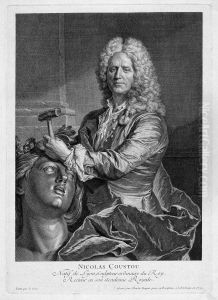Charles Dupuis Paintings
Charles Dupuis, not to be confused with any contemporary figures of a similar name, was a French artist known for his work as an engraver during the early 18th century. Born in 1685, Dupuis developed his artistic skills in an era known for its rich cultural and artistic achievements, which were part of the broader period known as the Age of Enlightenment in Europe. His life spanned the reigns of French monarchs Louis XIV and Louis XV, a time when France was a leading center of art and philosophy.
Dupuis was trained in the art of engraving, which involves incising a design onto a hard surface by cutting grooves into it. This craft was particularly important during a time when the reproduction of images was primarily achieved through printmaking techniques such as engraving and etching. Engravers like Dupuis played a vital role in the dissemination of artistic and scientific knowledge. His works would have included reproductions of paintings, illustrations for books, and possibly even currency or stamps, which were common engraving products of the time.
Unfortunately, specific details about Dupuis' life, including his training, notable works, and influence on his contemporaries, are not well-documented in historical records. The 18th century produced many skilled engravers, and without more concrete details, it is challenging to distinguish his individual contributions from those of his peers. Dupuis passed away in 1742, having spent his career contributing to the rich tapestry of French visual culture through his precise and skilled engravings. Today, art historians acknowledge the importance of engravers like Dupuis in preserving the works of great painters and in contributing to the cultural legacy of their time, even when the engravers' personal biographies remain obscure.

